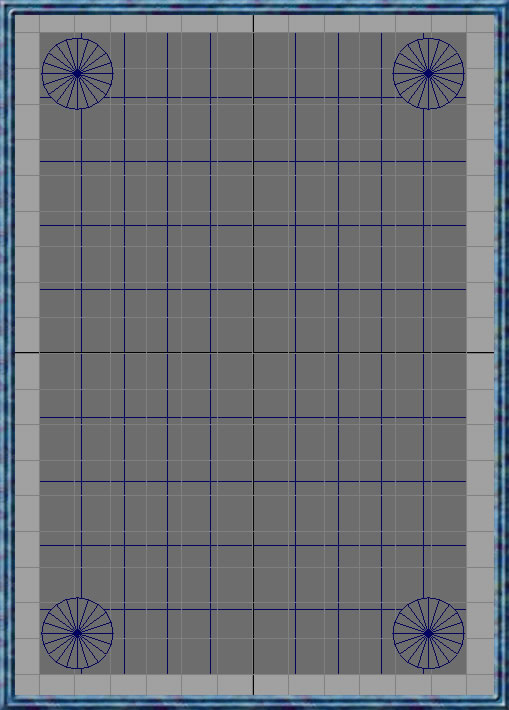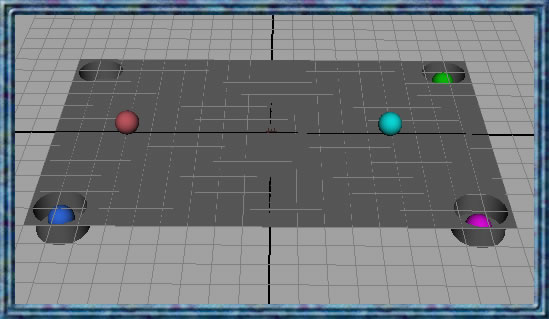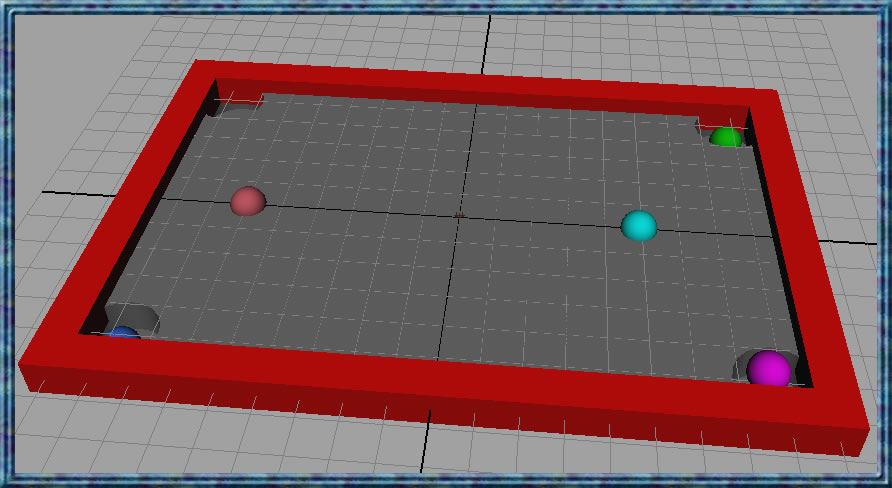Pool table problems testing and demonstraton
(Active and Passive Rigid Bodies and Gravity fields)
The following approach seemed promising and worked up until the adding of the four polygonal cube sides for the pool table.



The email note about how to create round holes in a POLYGON PLANE and the problem that happened at the last step of the process.
Everything worked okay up to this point. As you can see here, after the sides were added to the pool table, the polygonal plane surface now lets the pool balls sink into the surface of the table. Perhaps it is a very, very soft and deep felt! And if you look carefully, you can see that the purple ball did NOT fall into the hole like it did earlier. The Green and the Blue pool balls are both settled into their corner pockets okay, but the purple ball is not.

-
Diving into the deep end of the pool and not yet ready to swim perhaps sums up the round pool table holes
using Boolean Difference operations on Cube or Plane to carve out the Polygonal Cylinder. Perhaps there was a reason
that the textbook used SQUARE HOLES for the pool table!
- Get the simpler version with square holes working or turn in the version you have with round pool ball pockets. If the pool balls
do NOT fall into the ROUND pockets, that will be okay.
- The directions given in the email on Thursday evening March 12th will work so that the pool balls do NOT fall through the table surface anymore. They may NOT work at allowing the pool balls to fall through the holes you carve out. That will be okay as long as your
animation of the cue ball hitting another ball caused them to move around on the pool table! You do NOT have to make a shot.
- Again, if it is too tough feel free to switch to square pool table holes and drop the round holes approach.



